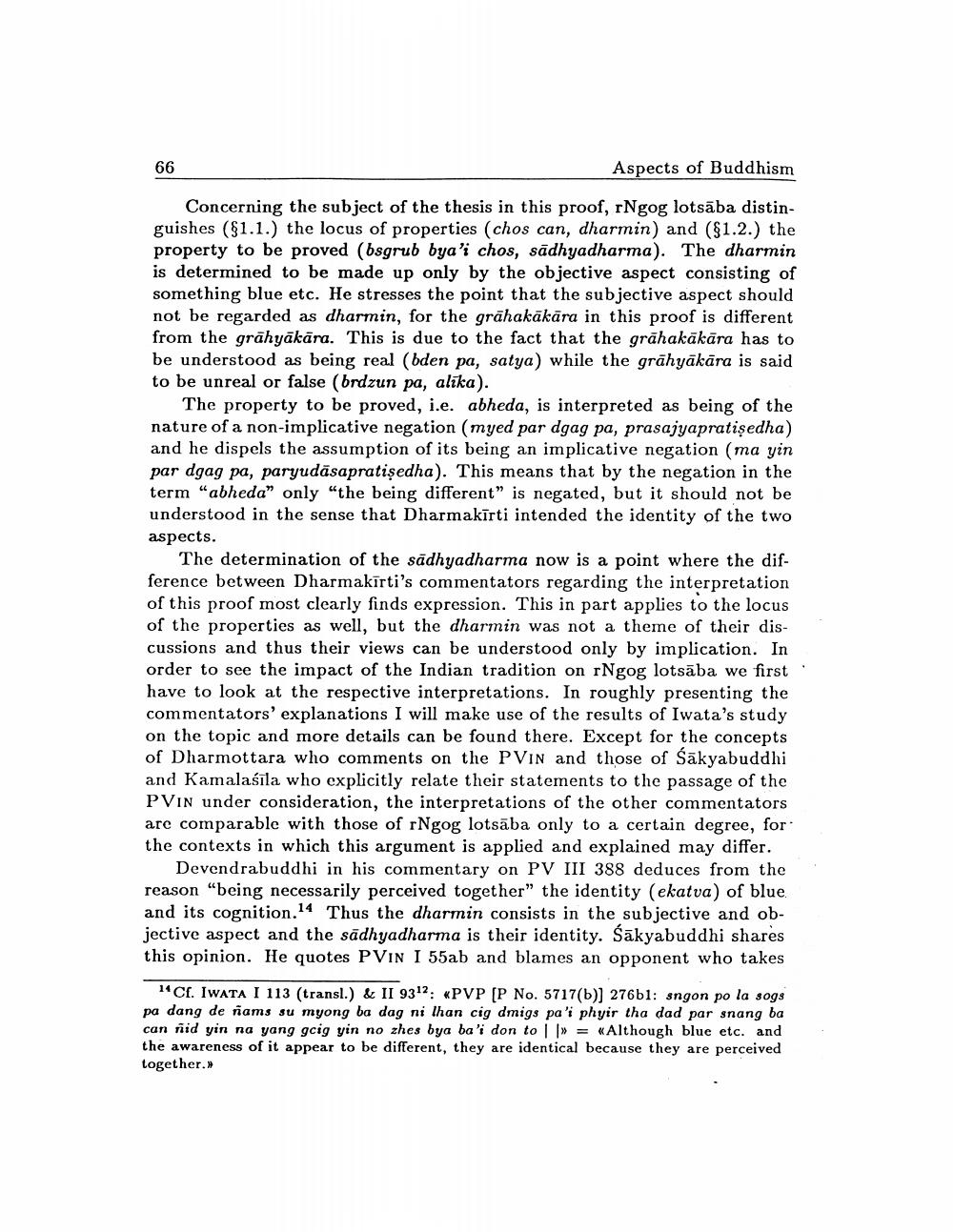Book Title: Rngog Lotsaba On Sahopalambhaniyama Proof In Dharmakirtis Pramanaviniscaya Author(s): Helmut Krasser Publisher: Helmut Krasser View full book textPage 4
________________ 66 Aspects of Buddhism Concerning the subject of the thesis in this proof, rNgog lotsāba distinguishes ($1.1.) the locus of properties (chos can, dharmin) and ($1.2.) the property to be proved (bsgrub bya'i chos, sādhyadharma). The dharmin is determined to be made up only by the objective aspect consisting of something blue etc. He stresses the point that the subjective aspect should not be regarded as dharmin, for the grāhakākāra in this proof is different from the grāhyākāra. This is due to the fact that the grāhakākāra has to be understood as being real (bden pa, satya) while the grāhyākāra is said to be unreal or false (brdzun pa, alika). The property to be proved, i.e. abheda, is interpreted as being of the nature of a non-implicative negation (myed par dgag pa, prasajyapratişedha) and he dispels the assumption of its being an implicative negation (ma yin par dgag pa, paryudāsapratişedha). This means that by the negation in the term "abheda" only "the being different" is negated, but it should not be understood in the sense that Dharmakīrti intended the identity of the two aspects. The determination of the sādhyadharma now is a point where the difference between Dharmakirti's commentators regarding the interpretation of this proof most clearly finds expression. This in part applies to the locus of the properties as well, but the dharmin was not a theme of their discussions and thus their views can be understood only by implication. In order to see the impact of the Indian tradition on rNgog lotsāba we first have to look at the respective interpretations. In roughly presenting the commentators' explanations I will make use of the results of Iwata's study on the topic and more details can be found there. Except for the concepts of Dharmottara who comments on the P Vin and those of Sākyabuddhi and Kamalasila who explicitly relate their statements to the passage of the PVin under consideration, the interpretations of the other commentators are comparable with those of rNgog lotsāba only to a certain degree, for the contexts in which this argument is applied and explained may differ. Devendrabuddhi in his commentary on PV III 388 deduces from the reason "being necessarily perceived together" the identity (ekatva) of blue. and its cognition.14 Thus the dharmin consists in the subjective and objective aspect and the sādhyadharma is their identity. Sākyabuddhi shares this opinion. He quotes PVIN I 55ab and blames an opponent who takes 14 Cf. IWATA I 113 transl.) & II 9312: «PVP (P No. 5717(b)] 276b1: sngon po la sogs pa dang de rams su myong ba dag ni lhan cig dmigs pa'i phyir tha dad par snang ba can nid yin na yang gcig yin no zhes bya ba'i don to >> = *Although blue etc. and the awareness of it appear to be different, they are identical because they are perceived together.»Page Navigation
1 2 3 4 5 6 7 8 9 10 11 12 13 14 15 16 17 18 19 20 21 22 23 24 25 26
